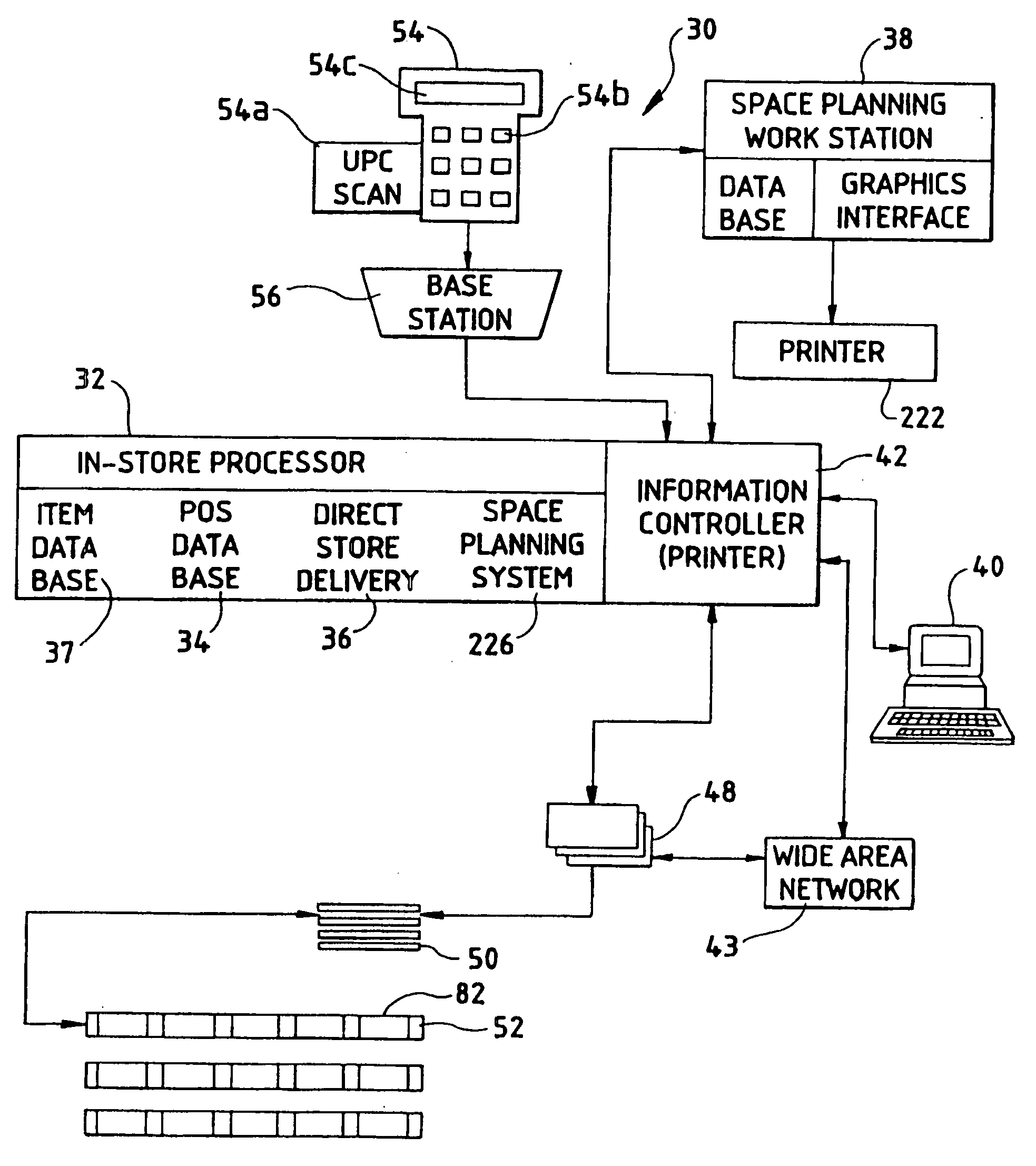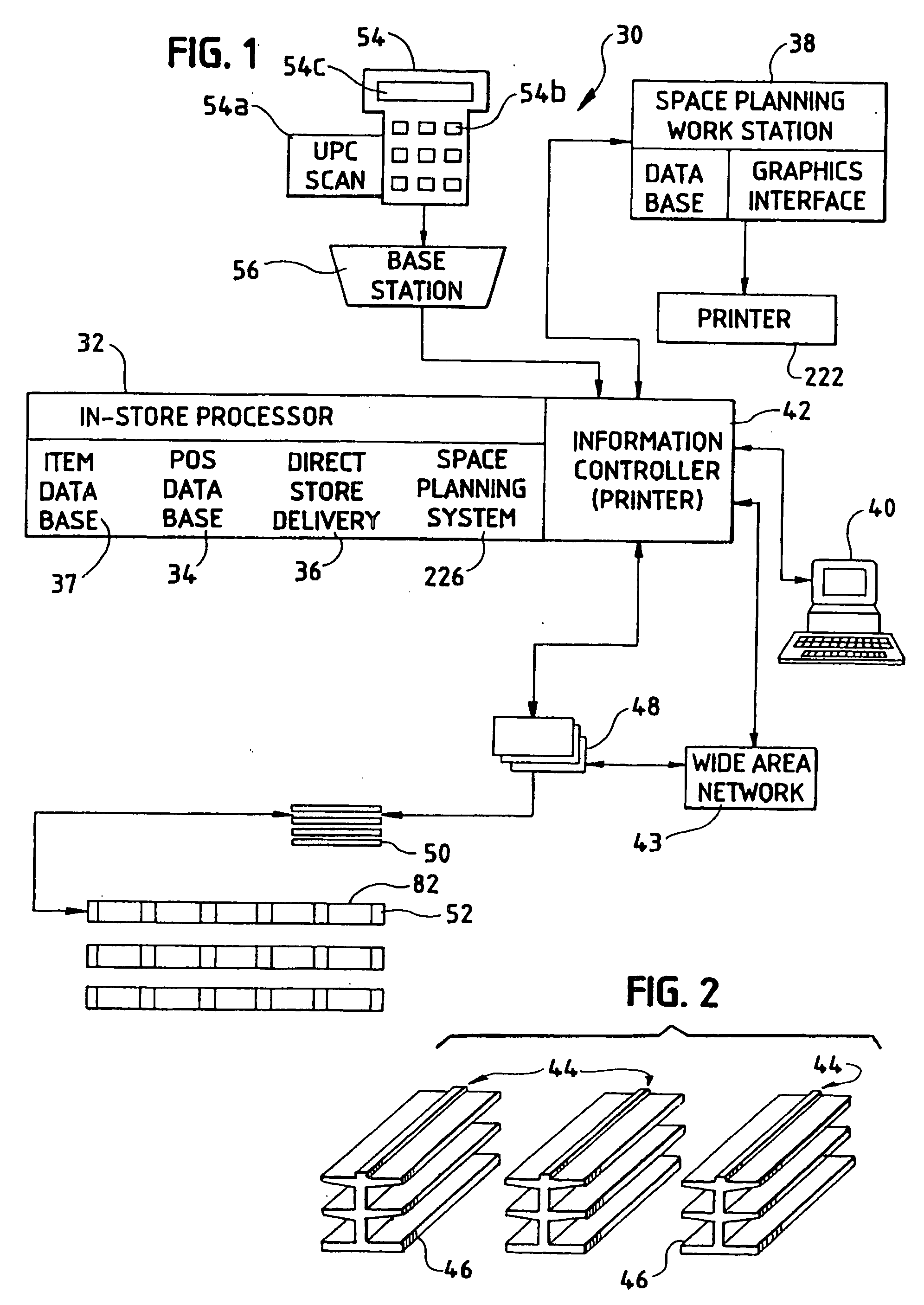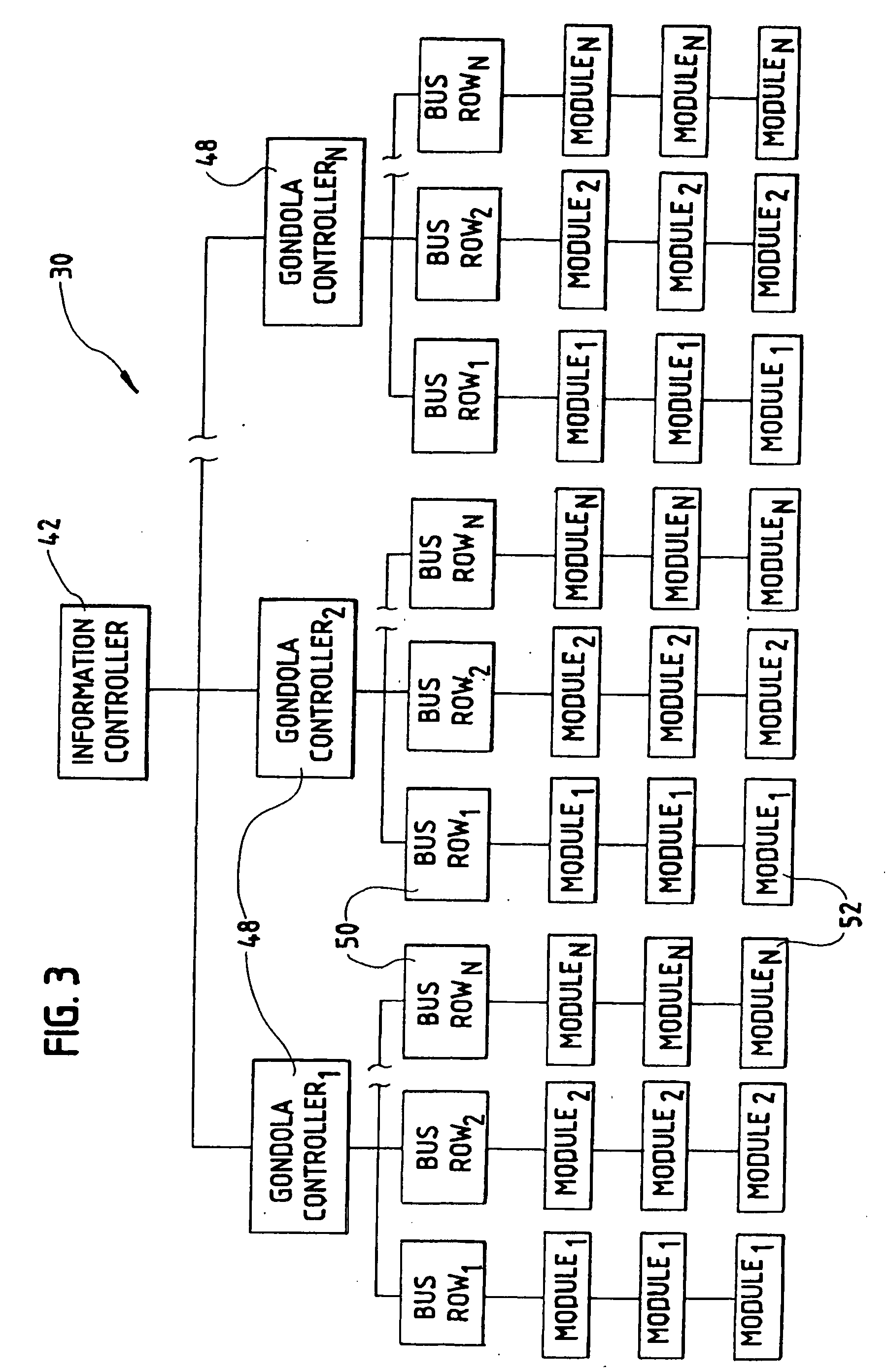Electronic product information display system
a product information display and electronic technology, applied in the field of product information 20 system, can solve the problems of inability to easily read codes by customers, inconvenient to maintain stock management, and high cost of personnel, resources and money, and achieve the effect of preventing deviation from the shelf plan and high quality
- Summary
- Abstract
- Description
- Claims
- Application Information
AI Technical Summary
Benefits of technology
Problems solved by technology
Method used
Image
Examples
Embodiment Construction
[0053]Referring now to the drawings, there is shown in FIG. 1 a product information system 30 embodying the invention. The product information system 30 is particularly useful for retail operations such as grocery stores and will be described in that environment. However, it should be noted that the product information system 30 is applicable for other applications such as wholesale locations and numerous other environments in which product information is desired to be displayed.
[0054]The product information system 30 manages point-of-purchase product supports such as shelves by providing two formats of information at the shelf: real-time information and customized, dynamic printed information. By providing real-time information such as product price and price / unit at the shelf, there is 100% integrity between the price the consumer is charged at the check-out terminal and the price as shown at the shelf. This supports frequent price changes with minimal personnel effort and cost. P...
PUM
 Login to View More
Login to View More Abstract
Description
Claims
Application Information
 Login to View More
Login to View More - R&D
- Intellectual Property
- Life Sciences
- Materials
- Tech Scout
- Unparalleled Data Quality
- Higher Quality Content
- 60% Fewer Hallucinations
Browse by: Latest US Patents, China's latest patents, Technical Efficacy Thesaurus, Application Domain, Technology Topic, Popular Technical Reports.
© 2025 PatSnap. All rights reserved.Legal|Privacy policy|Modern Slavery Act Transparency Statement|Sitemap|About US| Contact US: help@patsnap.com



